Are you relying on injection molding for every project? It’s a powerful tool, but assuming it’s always the best choice can be a costly mistake. You might be missing out on faster, cheaper, or more suitable manufacturing methods. This uncertainty can lead to inefficient production and missed opportunities. Let’s explore the alternatives to ensure you’re always choosing the right process for the job, truly mastering your craft.
The best process depends entirely on your project’s specific needs. For high-volume, complex parts, injection molding is often unbeatable. However, for long, continuous profiles like pipes or window frames, extrusion is faster and more efficient. For low-volume prototypes or highly intricate custom parts, 3D printing offers superior design freedom and no tooling costs. For hollow items like bottles, blow molding is the standard. The "better" process is the one that aligns with your volume, budget, material, and design complexity.
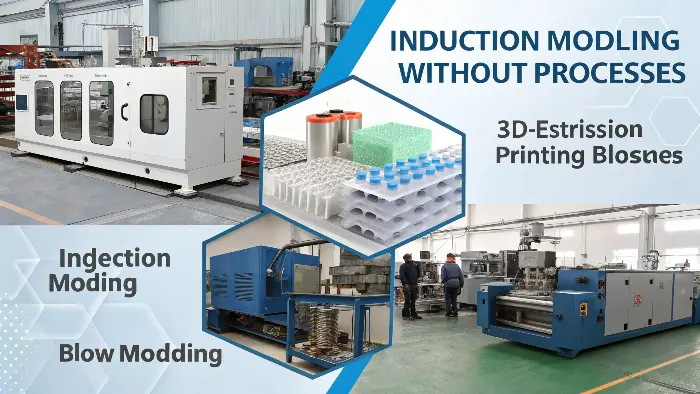
Choosing a manufacturing process is one of the most critical decisions you’ll make. It impacts your budget, timeline, and the final quality of your product. While injection molding is my bread and butter, I’ve learned that being a true expert means knowing its limits and understanding the alternatives. Sticking to one method out of habit can hold your projects back. Let’s break down the options so you can make an informed choice every single time and push your designs to the next level.
What is better than injection molding?
You’re an expert in your field, but the constant stream of new and old manufacturing techniques can be overwhelming. It’s hard to know if you’re making the most optimal choice or just sticking with what’s familiar. This doubt can be frustrating when you’re trying to innovate and improve efficiency. I’m here to cut through the noise and give you a clear comparison of the main players in plastic manufacturing.
There is no single process that is universally "better" than injection molding. The ideal choice is relative to the application. For example, extrusion molding is superior for producing continuous linear shapes like tubing and seals due to its high speed and efficiency. Blow molding is the go-to for hollow parts like bottles and tanks. And for large, simple parts like trays or enclosures, thermoforming can offer lower tooling costs and faster setup times, making it a strong contender.
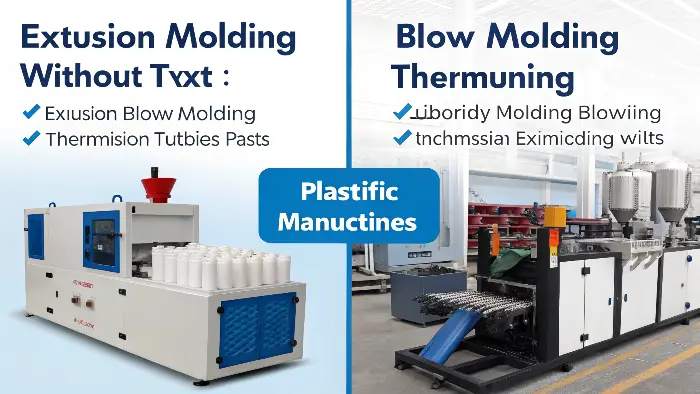
When I first started in this industry, I thought injection molding was the answer to everything. It’s precise, it’s fast for large quantities, and the material selection is vast. But a client once came to me with a project for a simple, long plastic channel. My first instinct was to design a complex, multi-part injection mold. An old mentor pulled me aside and asked why I wasn’t considering extrusion. It was a humbling moment. He showed me how extrusion could produce the part in one continuous, fast, and incredibly cost-effective run. That day, I learned that "better" is always relative. Let’s look at the specifics.
Key Alternatives and Their Strengths
The best way to understand the alternatives is to see how they stack up against injection molding based on what you’re trying to achieve. Each process was developed to solve a specific manufacturing problem.
| Feature | Injection Molding | Extrusion | Blow Molding | Thermoforming |
|---|---|---|---|---|
| Part Geometry | Complex, 3D shapes | Continuous 2D profiles | Hollow 3D shapes | Simple, shallow 3D shapes |
| Best For | Housings, gears, caps | Pipes, seals, frames | Bottles, tanks, containers | Trays, packaging, covers |
| Tooling Cost | High | Low to Medium | Medium | Low to Medium |
| Production Speed | High (per part) | Very High (linear feet) | High | Medium to High |
| Wall Thickness | Precise control | Uniform | Less control | Can be uneven |
When to Choose an Alternative
-
Choose Extrusion when your part has a constant cross-section. Think of it like squeezing toothpaste from a tube; the shape is consistent along its length. My insight about its speed is key here: for projects like window frames, gaskets, or pipes, the continuous nature of extrusion makes it far more efficient than trying to mold individual sections and join them later.
-
Choose Blow Molding if your part needs to be hollow. It’s a two-step process where a parison (a tube of molten plastic) is created and then inflated with air inside a mold, just like blowing up a balloon. This is perfect for bottles, fuel tanks, and carrying cases.
-
Choose Thermoforming for large, simple parts where wall thickness isn’t critically precise. It involves heating a plastic sheet until it’s pliable and then forming it over a mold using vacuum or pressure. It’s great for things like refrigerator liners, disposable cups, and product packaging. The tooling is much simpler and cheaper than injection molding.
What is cheaper than injection molding?
The high upfront cost of an injection mold can be a major roadblock. You have a brilliant product idea, but the five or six-figure price tag for tooling stops you in your tracks, especially for a new product with unproven demand. This financial barrier can kill innovation and prevent great designs from ever reaching the market. Let’s look at the more budget-friendly alternatives that can get your project off the ground without breaking the bank.
For low-volume production, several processes are significantly cheaper than injection molding. 3D printing is the cheapest for single units and prototypes as it requires no tooling at all. For slightly higher quantities (dozens to hundreds), vacuum forming and rotational molding offer a much lower tooling investment than injection molding. While their per-part cost is higher, the total project cost remains lower until you reach a specific break-even volume, often in the thousands of units.
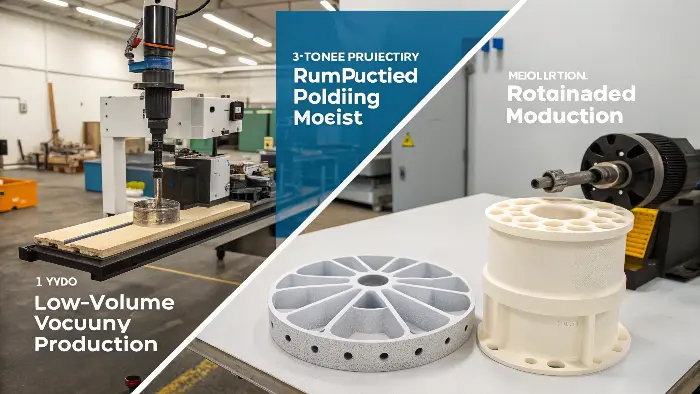
I remember working with a startup that had a fantastic design for a custom electronics enclosure. They were quoted $20,000 for an injection mold, which was their entire prototyping budget. They were ready to give up. I suggested they look into vacuum forming for their initial run of 200 units. The tooling cost was less than $1,500. Yes, the per-part cost was higher, but it allowed them to get a product to market, test it, and secure funding for a larger production run. Understanding the cost structure is not just about saving money; it’s about enabling possibility.
Breaking Down the Costs
The key to understanding which process is "cheaper" is to look at two things: the initial tooling cost and the per-part cost. Your total production volume determines which one matters more.
| Process | Tooling Cost | Per-Part Cost (Low Vol) | Per-Part Cost (High Vol) | Best for Volume |
|---|---|---|---|---|
| Injection Molding | Very High ($5k – $100k+) | Very High | Very Low | 10,000+ |
| 3D Printing | None | High | High | 1 – 100 |
| Vacuum Forming | Low ($500 – $5k) | Medium | Medium | 100 – 5,000 |
| Rotational Molding | Low-Medium ($2k – $20k) | Medium | Medium | 50 – 5,000 |
Calculating Your Break-Even Point
The "break-even point" is the production volume where the high tooling cost of injection molding becomes justified by its extremely low per-part cost.
- For Prototypes and Ultra-Low Volumes (1-100 units): 3D printing is almost always the cheapest. There’s no contest. You can print a part for a few dollars or a few hundred dollars, depending on size and material, with zero tooling investment.
- For Low to Medium Volumes (100-5,000 units): This is where vacuum forming and rotational molding shine. Their lower tooling costs mean your total project cost will be less than injection molding. You can get your product made without a massive capital outlay.
- For High Volumes (10,000+ units): Here, injection molding becomes the undisputed king of cost-effectiveness. The high tooling cost is spread across so many parts that it becomes negligible. The low material waste and fast cycle times result in a per-part cost that other processes simply can’t match.
Is 3D printing better than injection molding?
You see headlines everywhere praising 3D printing as the future of manufacturing. There’s pressure to adopt it, and you wonder if it’s time to abandon traditional methods like injection molding. But you’re also skeptical. Can a 3D-printed part really match the quality and speed you need for a final product? This conflict can make it hard to decide which technology to invest your time and budget in. Let’s set the record straight.
3D printing is better than injection molding for rapid prototyping, creating highly complex or customized parts, and for very low-volume production runs. Its key advantage is the complete freedom of design without the need for expensive tooling. However, injection molding is far superior for mass production. It offers incredible speed, a very low cost per part at scale, better surface finishes, and a wider range of engineering-grade materials with more consistent mechanical properties. They are complementary tools, not direct competitors.
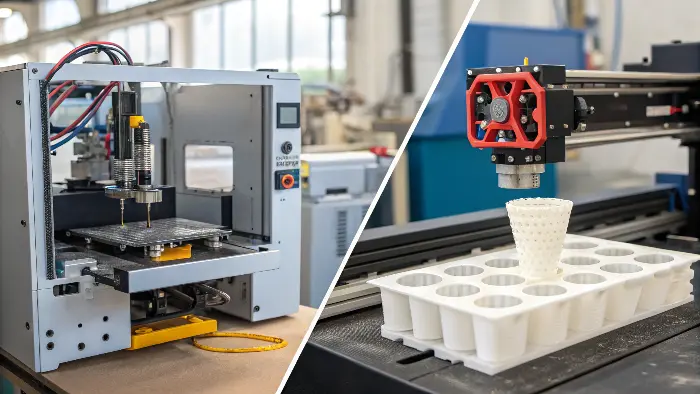
I use both technologies in my business every single week. They solve different problems. A few years ago, we were developing a complex medical device with several interlocking parts. The injection molds were going to cost over $80,000. Before committing, we 3D printed the entire assembly using a high-resolution SLA printer. We discovered two critical design flaws in how the parts fit together. Finding that mistake with 3D printing cost us about $400 and two days. Finding it after the steel molds were cut would have cost us tens of thousands of dollars and months of delays. 3D printing isn’t a replacement; it’s an essential partner.
A Head-to-Head Comparison
To really understand where each process shines, you need to compare them across the factors that matter most in product development and manufacturing.
| Feature | 3D Printing (Additive) | Injection Molding (Subtractive/Forming) |
|---|---|---|
| Speed (per part) | Slow (hours per part) | Fast (seconds per part) |
| Upfront Cost | None (for tooling) | Very High (for mold) |
| Cost per Part | High and relatively constant | Decreases dramatically with volume |
| Design Freedom | Nearly unlimited complexity | Limited by moldability (draft, undercuts) |
| Material Properties | Good, but can be anisotropic | Excellent, isotropic, and consistent |
| Surface Finish | Often requires post-processing | Can be excellent, straight from mold |
| Best For | Prototypes, custom parts, low volume | Mass production, high-volume parts |
Speed and Scale: The Deciding Factor
The biggest difference is how they handle volume. A 3D printer might take 8 hours to make one part. To make 100 parts, it will take 800 hours. The time scales linearly. An injection molding machine might take 30 seconds to make one part after the initial mold setup. To make 100 parts, it takes 50 minutes. To make 100,000 parts, the speed and cost-per-part are unbeatable. If your goal is to produce thousands or millions of identical items quickly and cheaply, injection molding is the only logical choice.
Design Freedom vs. Design for Manufacturability
3D printing allows you to create geometries that are impossible to mold, like internal lattice structures or parts-within-parts. This is its superpower. Injection molding, however, requires you to follow strict "Design for Manufacturability" (DFM) rules. You need to think about draft angles so the part can be ejected, uniform wall thickness to prevent sink marks, and how to handle undercuts. While this seems restrictive, these principles often lead to a stronger, more efficient final part design.
What is the difference between RTM and injection molding?
You might hear the term Resin Transfer Molding (RTM) used for high-performance parts in the automotive or aerospace industries. On the surface, it sounds a lot like injection molding—you’re injecting a material into a mold. This similarity can be confusing. Choosing the wrong one because you misunderstand their fundamental differences could lead to a product that is too heavy, too weak, or far too expensive for its application. Let’s clarify exactly what sets them apart.
The primary difference is the material and the process sequence. Injection molding injects molten thermoplastic into an empty mold cavity. Resin Transfer Molding (RTM) first places a dry fiber preform (like carbon or glass fiber) into the mold, closes it, and then injects a liquid thermosetting resin. This resin saturates the fibers and cures, creating a high-strength, lightweight fiber-reinforced composite part. Injection molding makes plastic parts; RTM makes composite parts.
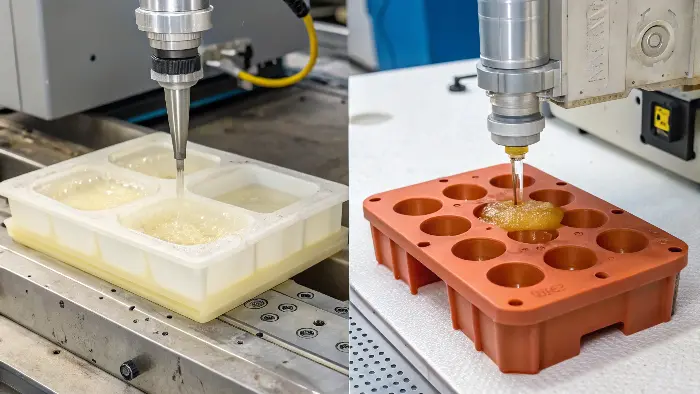
My first encounter with RTM was a real eye-opener. A client in the high-performance automotive sector wanted to replace a cast aluminum bracket with something lighter but just as strong. Injection molding with a glass-filled nylon was an option, but it couldn’t meet the extreme rigidity specs. We collaborated with a composites specialist who introduced us to RTM. By creating a custom carbon fiber preform and injecting a high-temperature epoxy resin, we produced a part that was 40% lighter than the aluminum version but even stiffer. It showed me a whole new world beyond thermoplastics.
Core Process and Material Distinctions
Understanding the "how" and "what" of each process reveals why they are used for such different applications. They are fundamentally different approaches to creating a final shape.
| Feature | Injection Molding | Resin Transfer Molding (RTM) |
|---|---|---|
| Material Type | Thermoplastics (PE, PP, ABS, PC) | Thermosetting Resins (Epoxy, Polyester) |
| Reinforcement | Optional (short fibers mixed in) | Required (long fiber preform) |
| Process | Inject melted plastic into empty mold | Inject liquid resin into mold with fiber |
| Part Strength | Good to Very Good | Exceptional (high strength-to-weight) |
| Cycle Time | Fast (seconds to minutes) | Slow (minutes to hours) |
| Tooling Pressure | Very High | Low to Medium |
| Typical Apps | Consumer goods, enclosures, gears | Aerospace structures, race car bodies |
The Role of Reinforcement in RTM
The star of the RTM show is the fiber preform. This isn’t just a handful of short fibers mixed into the plastic like you might find in glass-filled nylon. This is a strategically designed fabric or mat of continuous fibers (like carbon, glass, or aramid) that forms the structural backbone of the part. The resin’s job is simply to hold these powerful fibers in place. This is why RTM parts can achieve strength properties similar to metals but at a fraction of the weight. In injection molding, the plastic itself provides the bulk of the structure.
Pressure and Tooling Considerations
Because injection molding forces thick, molten plastic into a mold at high speed, it requires extremely high pressures. This means the molds must be made from hardened steel and are very heavy and expensive. RTM injects a low-viscosity liquid resin at much lower pressures. This means the tooling can be made from cheaper materials like aluminum or even composites, significantly reducing the upfront cost, which helps offset the slower cycle time and higher material cost.
Conclusion
Injection molding is an incredibly powerful and efficient manufacturing process, but it’s not the only tool in the shed. The "better" process doesn’t exist in a vacuum; it is always the one that best fits your specific project goals. By understanding the unique strengths of alternatives like extrusion, 3D printing, and RTM, you can make smarter, more effective decisions. Choosing the right process is the first step to mastering your craft and bringing successful products to life.
